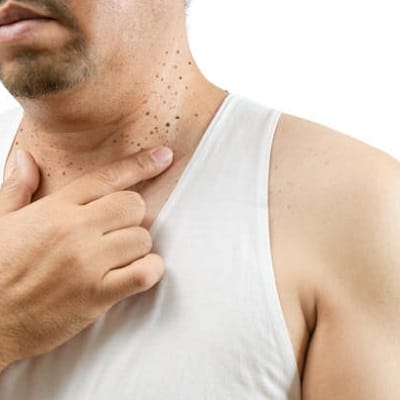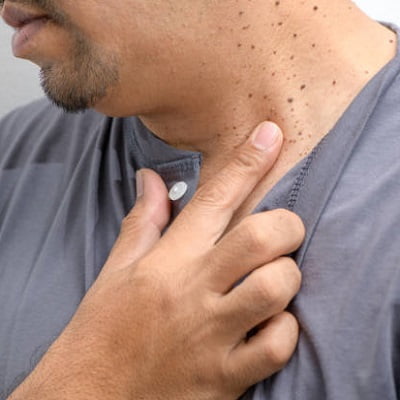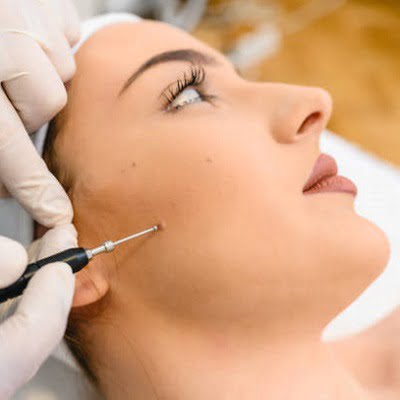Skin tags develop where skin scrapes against clothing, such as the neck, underarms, eyelids, and crotch. They are innocuous little growths. They are usually harmless, but if you can see them, they can undermine your self-esteem. Many people ask if skin tag removal is safe. Due to its quick action and short recovery period, skin tag removal in Islamabad, Pakistan is becoming increasingly popular.
How can skin tags be removed with lasers?
During skin tag removal, a focused laser beam of energy targets and removes the tag from the peel. The laser “cuts off” the skin tag at its base, resulting in the stopping of blood flow and bleeding. Because it only affects the tag and not the surrounding skin, this procedure is precise.
Is it safe to remove skin tags using lasers?
The following primary reasons regard it as safe:
Noninvasive Procedure:
Unlike surgical removal, laser treatment doesn’t involve making an incision. Because there are no open wounds after the procedure, there is a decreased risk of infection.
Accurate targeting:
Because of their exceptional precision, lasers reduce the possibility of damaging surrounding peel tissue. This is particularly helpful for getting rid of skin tags from delicate areas like the face or neck.
There is little chance of scarring tags, particularly if frozen or cut, which can leave scars when removed. During laser treatment, the laser’s precise targeting and cauterizing impact reduce scarring.
Fast Recuperation Time:
As laser removal doesn’t require any downtime, you may usually get back to your regular activities soon away. For people with busy schedules who need a prompt, efficient response, this convenience is fantastic.
Considerations for Efficiency and Safety:
There are a few factors that affect the effectiveness and safety of laser skin tag removal, despite the fact that treatment is generally safe. By keeping these factors in mind, you can minimize risks and get the greatest benefits.
Sensitivity and Skin Type
Consult an aesthetician if you have extremely sensitive skin or certain conditions like psoriasis or eczema, as laser treatment can occasionally cause irritation or an adverse reaction.
The skin tag’s location
The eyes, for example, are more sensitive than other components. In most circumstances, lasers can be used, but sensitive locations demand special safety measures.
The skin tag’s dimensions.
Small to medium-sized tags are typically recommended for undergoing laser treatment. Your aesthetician might recommend freezing or surgical excision as alternative treatment techniques for bigger skin tags.
Expertise.
Making sure a qualified physician performs the procedure is essential. Skin care specialists and dermatologists modify laser settings according to tag size, peel type, and other variables.
What to anticipate when having skin tags removed by laser.
An adequate number of tags being removed makes laser skin tag removal a swift process, typically lasting only a few minutes. What to anticipate is as follows:
Getting ready:
The Physician will thoroughly clean and sanitize the afflicted area to prevent infection. If necessary, a numbing cream may be used before administering the frequently well-tolerated laser.
Laser Application:
The aesthetician directs the laser beam at the skin tag using a portable device. It is normally harmless, but you can get a little warm feeling. The area is closed and the tag is removed by the laser.
Advantages of Laser Skin Tag Elimination:
People find laser peel tag removal an effective solution due to its numerous benefits.
- It is quick and effective.
- It is recommended for people who have multiple tags, it’s perfect because it only takes a few seconds to remove each one.
- It has durable outcomes although new tags may eventually form in other areas, once removed, they rarely return in the same spot.
- Redness and moderate edema are uncommon and typically temporary side effects.
Possible Side Effects:
Although laser skin tag removal is a safe procedure, there is a chance of some short-term negative effects.
- In most cases, mild redness or swelling goes away in a few hours to a day.
- For a day or two, the treated region can feel a little sensitive.
Can You Benefit from Laser Skin Tag Removal?
Because laser skin tag removal is quick, safe, and less invasive, many individuals prefer it. Those with extremely dark peel tones or those who suffer from specific conditions that hinder healing, however, might not benefit from it.
Concluding remarks:
Using laser skin tag removal, you can quickly and safely remove unsightly epidermis tags with a low risk involved. Laser treatment’s accuracy offers a focused approach, reducing the possibility of adverse effects and facilitating a speedy recovery. You must visit SKN Cosmetics and consult with our qualified aesthetician in Islamabad to learn about the process if you’re thinking about making the decision of skin tag removal.





